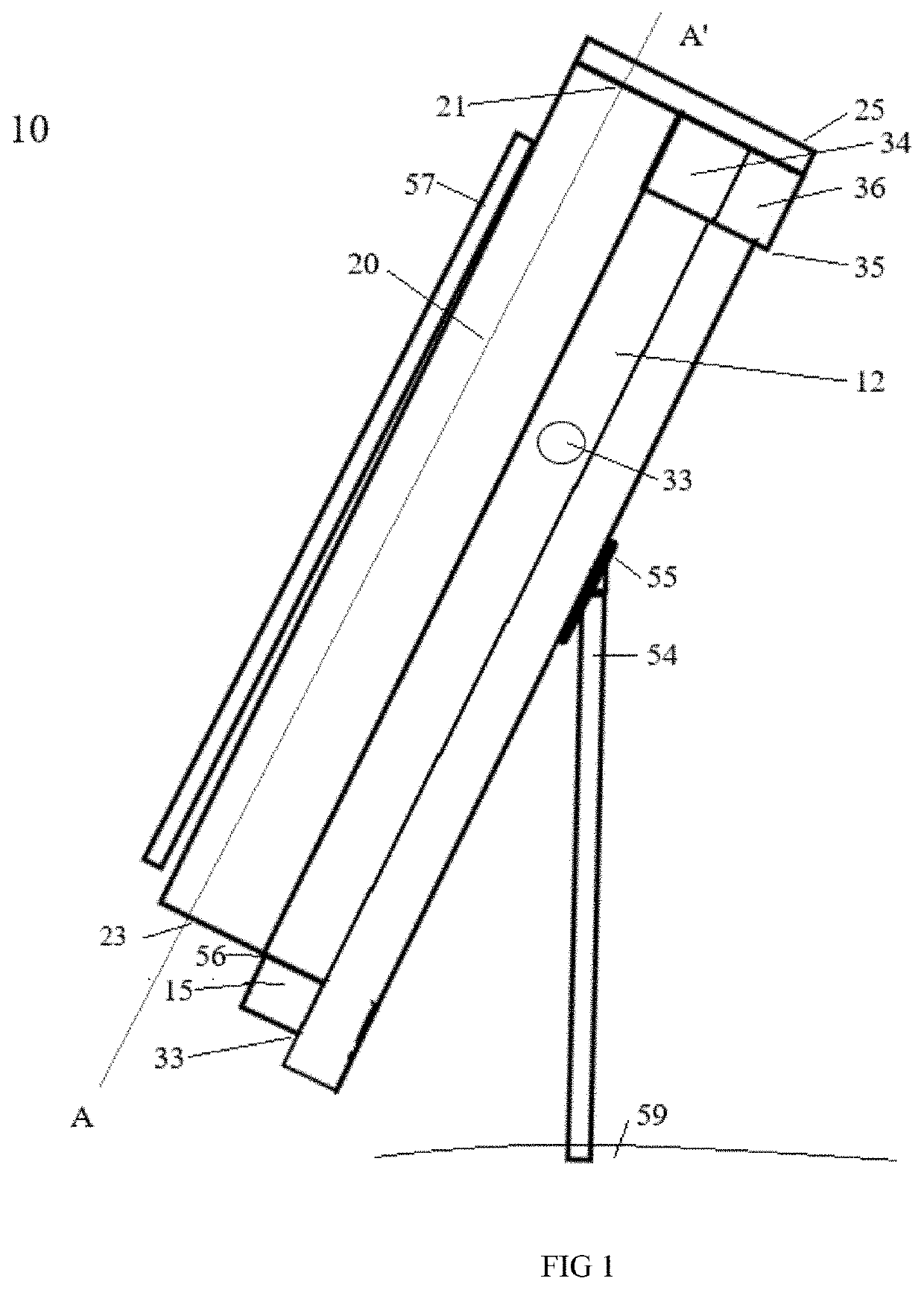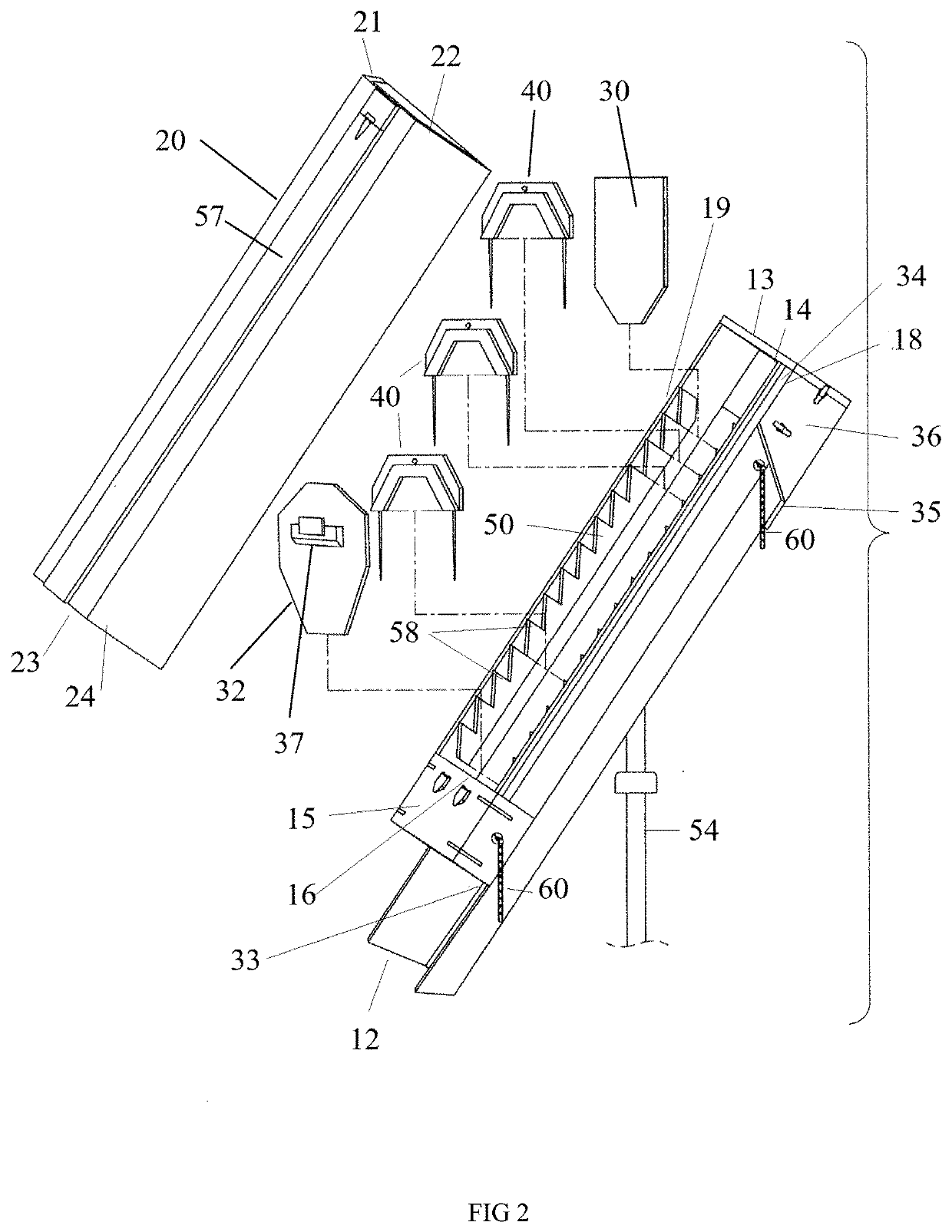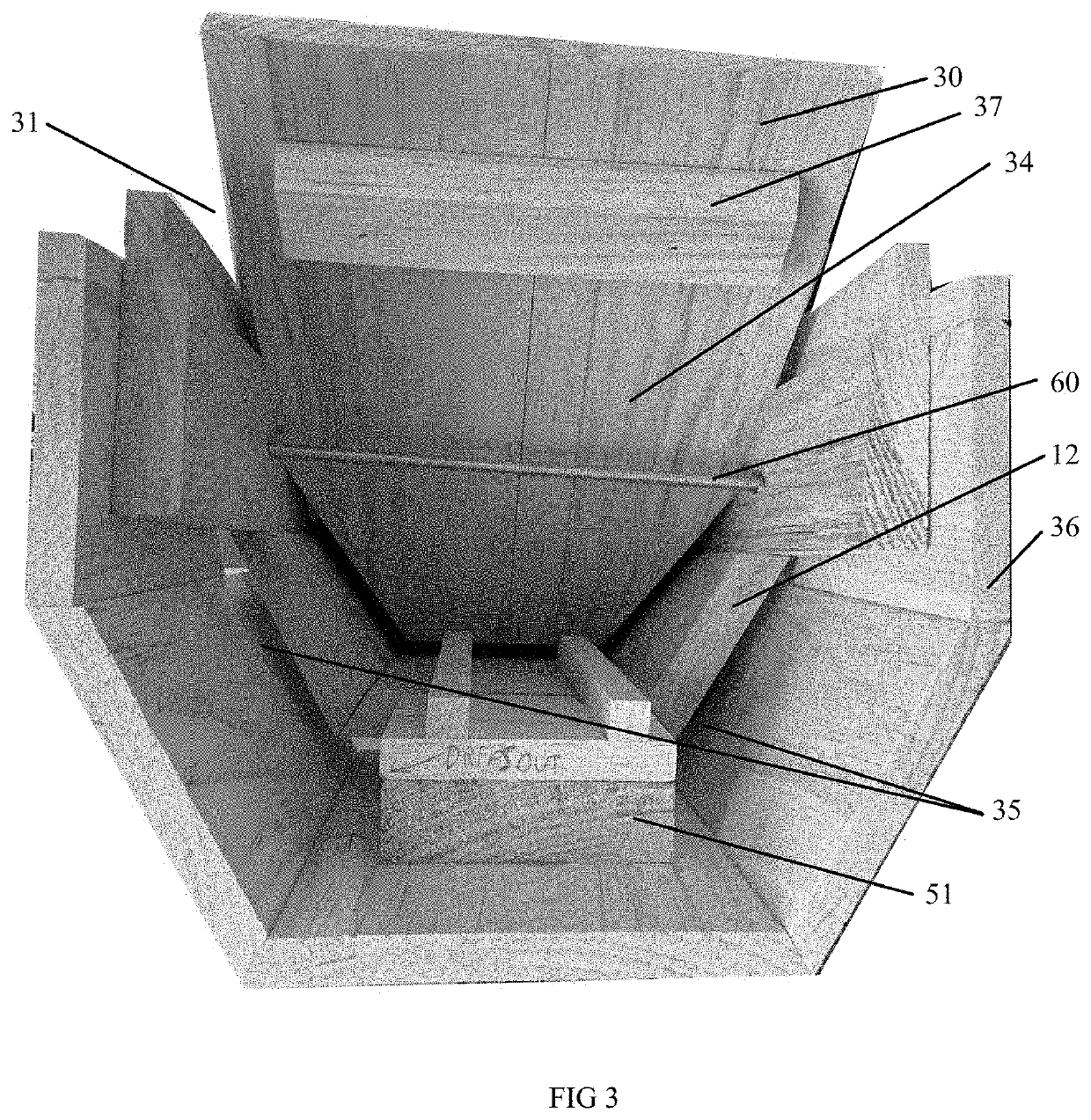Beehive
- Summary
- Abstract
- Description
- Claims
- Application Information
AI Technical Summary
Benefits of technology
Problems solved by technology
Method used
Image
Examples
Embodiment Construction
[0020]Following are detailed description of preferred embodiments, which are meant to be descriptive and not limiting.
[0021]The invention is an improved beehive.
[0022]As shown in FIG. 1, the invention includes a beehive 10 comprising a hive box 12, a hive cover 20, a support post 54 (which can be typically attached to the hive box with an angled support 55) which can be disposed in the ground 59 at an angle. One or more bee entries 33 are located in the hive box. The hive cover 20 can include a first high cover end, or upper end, 21, a second high cover end, or lower end, 23, and, optionally, a roof plate 25 and / or a cover support leg 57. The hive box 12, includes a second hive box end, or lower end 15. Typically, the hive cover 20 will be attached to the hive box lower end 15 with a hive cover hinge 56. Preferably, as the hive cover 20 opens to expose the interior of the hive box 12, the cover support leg 57 will swing out and meet the ground 59. At the upper end of the hive box is...
PUM
 Login to View More
Login to View More Abstract
Description
Claims
Application Information
 Login to View More
Login to View More - R&D
- Intellectual Property
- Life Sciences
- Materials
- Tech Scout
- Unparalleled Data Quality
- Higher Quality Content
- 60% Fewer Hallucinations
Browse by: Latest US Patents, China's latest patents, Technical Efficacy Thesaurus, Application Domain, Technology Topic, Popular Technical Reports.
© 2025 PatSnap. All rights reserved.Legal|Privacy policy|Modern Slavery Act Transparency Statement|Sitemap|About US| Contact US: help@patsnap.com



